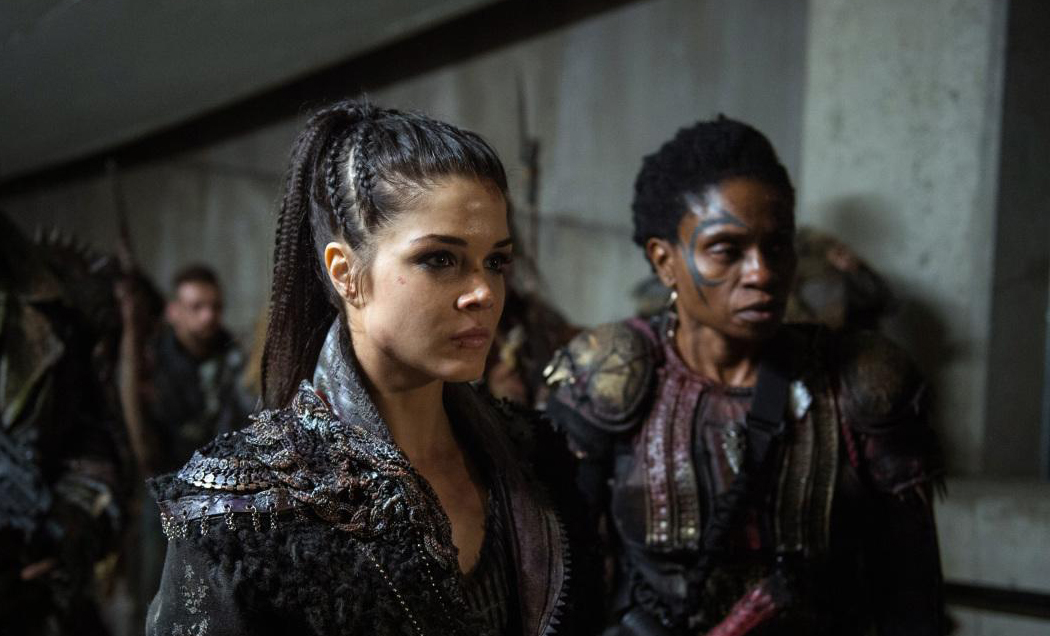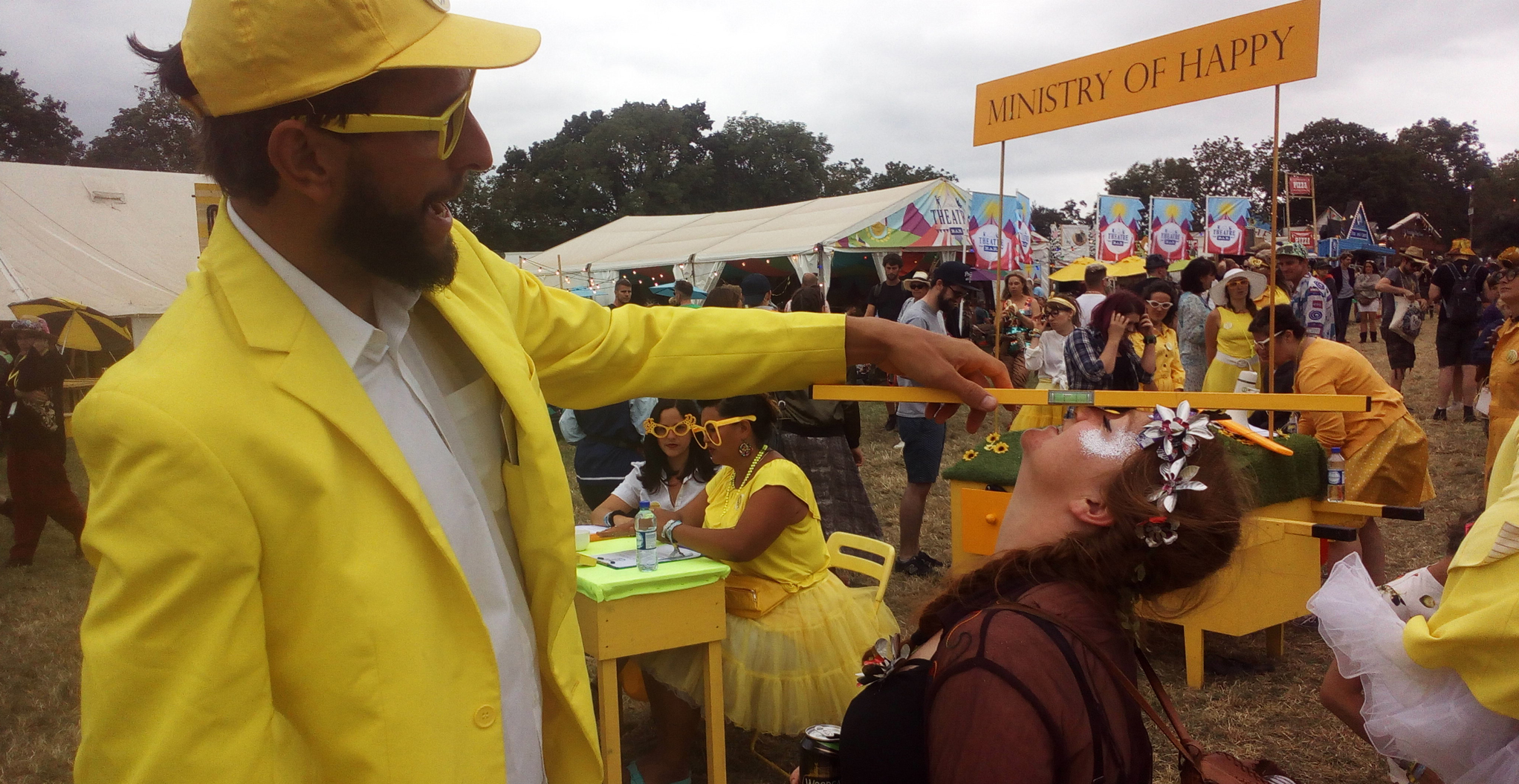Fargo season 3 review: More betrayal and murder in Minnesota

In his seminal text The Death of the Author, Roland Barthes proposed the following theory concerning the development of meaning in narrative, and writing overall: “The reader is the space on which all the quotations that make up a writing are inscribed without any of them being lost; a text’s unity lies not in its origin but in its destination.” In this context, the writer does not create meaning; the reader (or viewer, by extension to visual arts) does. Thus, there can be no homogeneity of meaning for a work of art, instead replaced by heterogeneity spread across every individual recipient.
I start by referencing Barthes, because it feels particularly relevant to the ending of season 3 of Fargo, an ending which, by the intent of showrunner Noah Hawley, does not really end the narrative. The last section of episode 10 was a succession of endings; first, Nikki Swango (Mary Elizabeth Winstead) dies by cop before she can execute Emmit Stussy (Ewan McGregor). Then, Stussy reconciles with his estranged wife and seems to escape largely unscathed. Then, five years later, Mr. Wrench (Russell Harvard) shows up in his kitchen with a silenced pistol and finishes the job, presumably out of respect for Nikki. But all of these endings merely precede the ‘final showdown’, as it were, between former chief of police, now Department of Homeland Security agent Gloria Burgle (Carrie Coon) and V.M. Varga (David Thewlis), whom no specific description would quite do justice.
The two trade barbs, both certain in their expectations of what will happen next, of who will next walk into the interrogation room. Gloria, buoyed by the scale of the evidence against him, expects to see DHS officers coming to put Varga in handcuffs. Varga expects what he’s always expected across the season: an escape from a seemingly inescapable situation. We see a small smile on the face of Gloria, that perhaps, finally, Varga has overplayed himself. The scene cuts to a shot of the door, the ticking clock above it, as we wait to see who will be proven right, and… the episode ends. What happens next is entirely up to the viewer.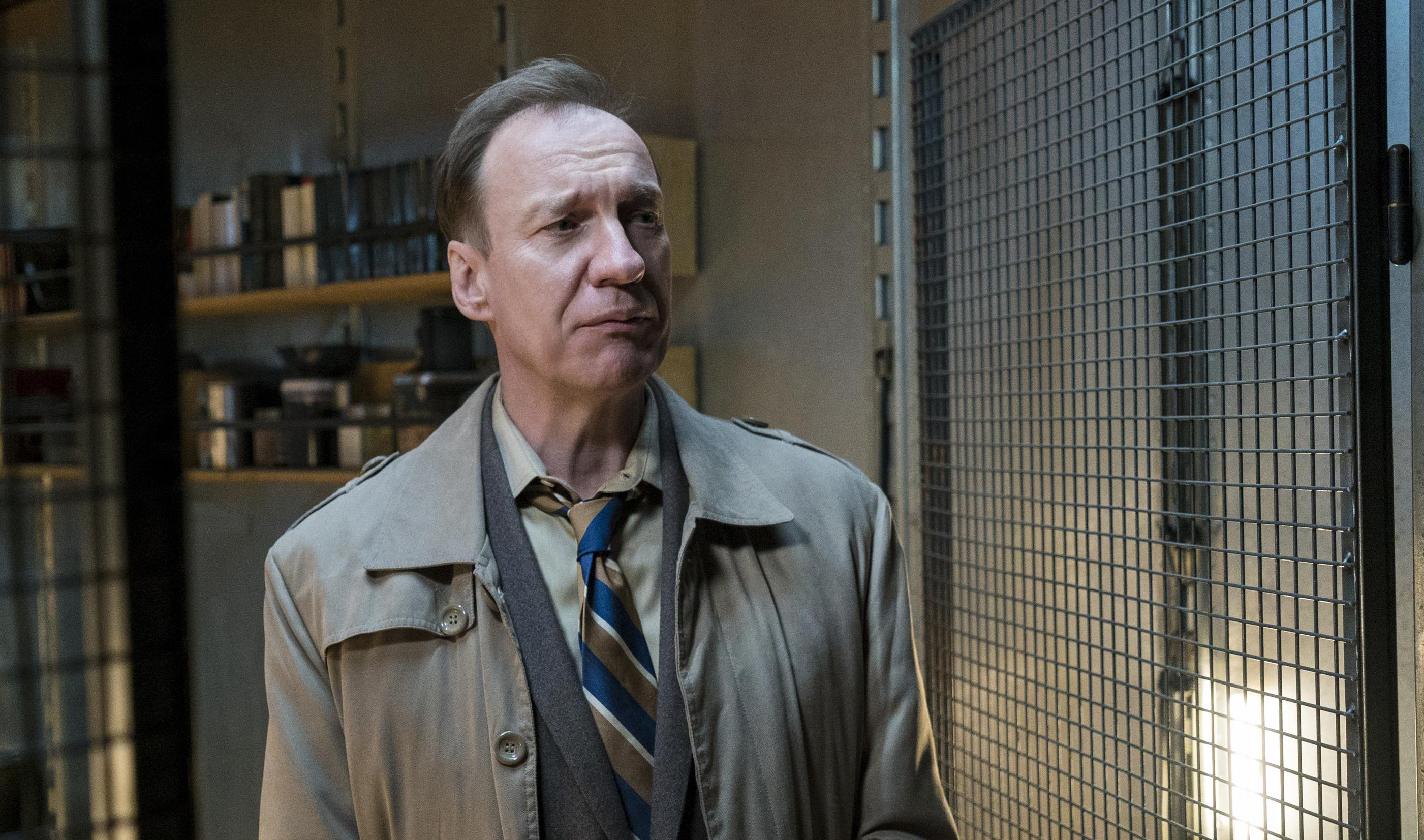 There are plenty of works of fiction which illicit diverse interpretations through ambiguity, but it’s rare to find one so prestigious that overtly accepts the notion of Barthes. Yet that is, explicitly, what Hawley does with such an ending, as he said himself in interviews after the finale: “If I present you with a choice, you have to decide how that door is going to open and if it’s going to end well. It still has a happy ending if you’re an optimist. It just becomes a more active process. It’s an allegory to the conversation we’re having at this moment. How will we treat each other? Is it American carnage?” In one sense, I’m all for ambiguity. If you adhere to Barthes, some ambiguity is always inevitable, unavoidable even. But there’s the kind of ambiguity where a portrayed event is open to interpretation, and there’s the kind of ambiguity of this ending, where the writer leaves a vacuum to be filled by the audience.
There are plenty of works of fiction which illicit diverse interpretations through ambiguity, but it’s rare to find one so prestigious that overtly accepts the notion of Barthes. Yet that is, explicitly, what Hawley does with such an ending, as he said himself in interviews after the finale: “If I present you with a choice, you have to decide how that door is going to open and if it’s going to end well. It still has a happy ending if you’re an optimist. It just becomes a more active process. It’s an allegory to the conversation we’re having at this moment. How will we treat each other? Is it American carnage?” In one sense, I’m all for ambiguity. If you adhere to Barthes, some ambiguity is always inevitable, unavoidable even. But there’s the kind of ambiguity where a portrayed event is open to interpretation, and there’s the kind of ambiguity of this ending, where the writer leaves a vacuum to be filled by the audience.
It’s an active process, sure, as Hawley said, but do we actually want an ‘active process ending’ to such a rich drama? I’m not sure. In ending without an ending, the scene does allow both present characters to maintain their sheen of certainty, which is integral to each through the season; both have a self-confidence that drives them across the events. It drives Varga, as part of his social-Darwinist outlook on human value and through his slow exsanguination of Stussy Lots, and it drives Gloria, to persist with her investigation despite the dismissive condescension of ‘new Chief’ Dammik (Shea Whigham). But effective endings aren’t always about giving everything to everyone, or about maintaining a perpetual simulacrum; as in life, something usually has to give.
Besides, if ambiguity was the order of the day, why confirm the death of Nikki, or Emmit? Why cut away from Gloria and Varga ahead of time, but maintain the focus on the others until certain? Perhaps that would present a degree of anarchy, but if Hawley wanted to open one door, why not open them all and commit completely to the power of the viewer?
It’s not like Hawley isn’t prepared to experiment. If the UFO of Fargo season 2 wasn’t indicative enough, then the non-linearity and sheer madness of Legion, and the ‘shaggy dog’ detour of the Fargo season 3 episode ‘The Law of Non-Contradiction’ surely made it clear. His creativity as a writer and showrunner makes for vastly interesting and entertaining television, but, where Fargo is concerned, it perhaps shrouds a concept that’s running out of steam, at least temporarily.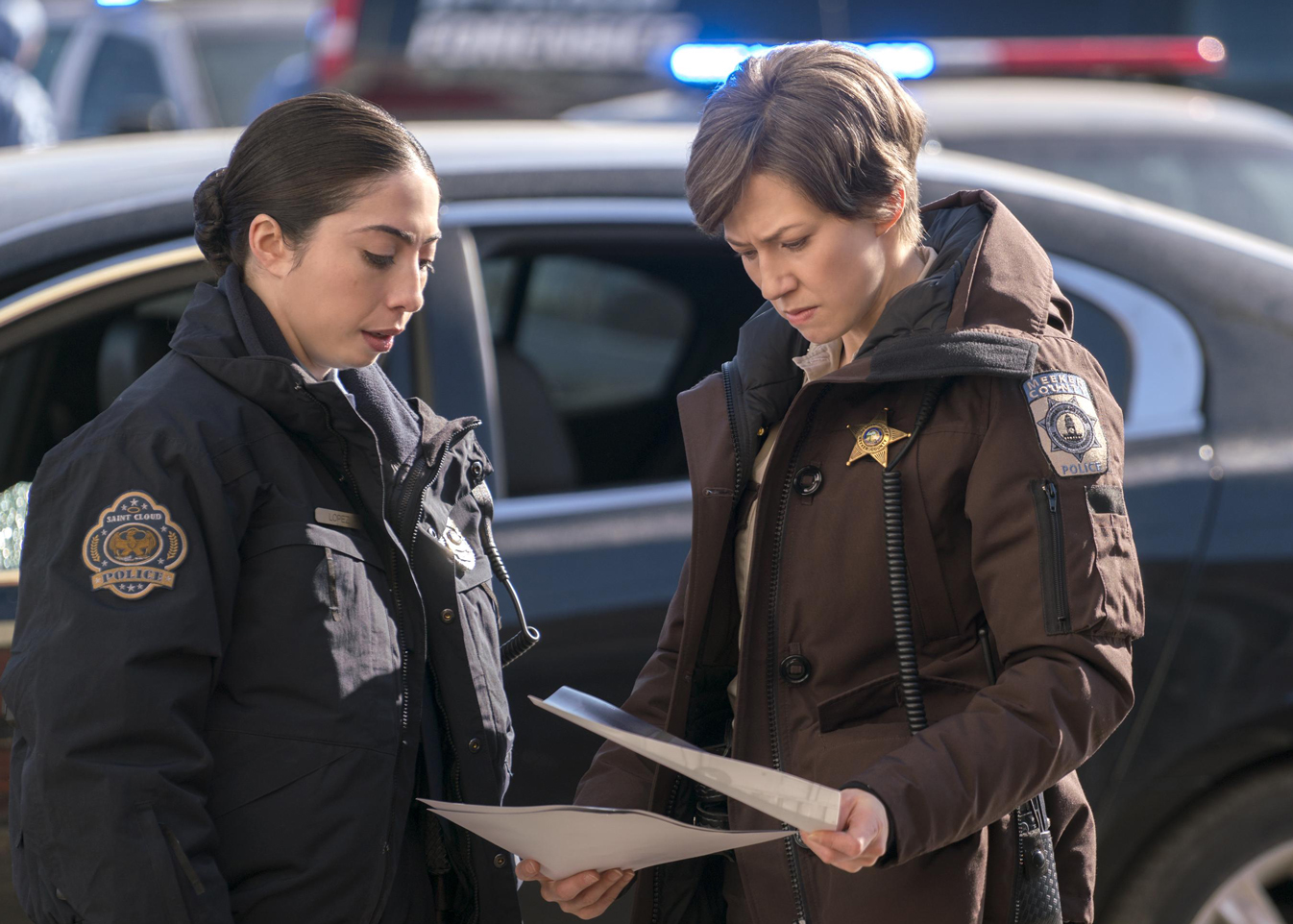 Season 3 of Fargo was, of course, the third such season of the television adaptation of the Coen Brothers’ Fargo, thus making this the fourth iteration of the formula. But unlike other ‘anthology shows’ – Black Mirror, American Horror Story, True Detective – Fargo is both cursed and blessed by the constrictions of that formula. Those other anthology shows, with less binding criteria, have the freedom to flourish, but also the freedom to fail (see True Detective season 2). Fargo, meanwhile, is built on the solid foundations of a superb film, yet there are only so many variations possible on ‘Minnesota Nice’, murder-gone-wrong, an enigmatic outsider and layered betrayals. This, too, is something Hawley has spoken out on; the series is not expected to return for season 4 for three years at least, due to a present lack of creative ideas for what exactly might happen.
Season 3 of Fargo was, of course, the third such season of the television adaptation of the Coen Brothers’ Fargo, thus making this the fourth iteration of the formula. But unlike other ‘anthology shows’ – Black Mirror, American Horror Story, True Detective – Fargo is both cursed and blessed by the constrictions of that formula. Those other anthology shows, with less binding criteria, have the freedom to flourish, but also the freedom to fail (see True Detective season 2). Fargo, meanwhile, is built on the solid foundations of a superb film, yet there are only so many variations possible on ‘Minnesota Nice’, murder-gone-wrong, an enigmatic outsider and layered betrayals. This, too, is something Hawley has spoken out on; the series is not expected to return for season 4 for three years at least, due to a present lack of creative ideas for what exactly might happen.
But to disingenuously depict Fargo as an extended snowy Groundhog Day of a series is to ignore the consistent stand-out element of the show, the film, and indeed season 3: the characters. That repeated formula is just a playground, a sandbox which each year Hawley has filled with new players. Again, this year, the cast excels. With top billing and playing twins, the focus was naturally on Ewan McGregor, but really it was actors below him that drove the season on; the trio of Gloria, Varga and Nikki. The former two were fairly well defined from the outset, but Nikki grew and grew as the season progressed. Initially, she was just an ex-con who (it was assumed) was just feeding off the lust of Ray Stussy, the less successful of the McGregor-played twins. Then we see the genuine nature of their relationship, her love of bridge, and her resourcefulness and determination in disposing of Maurice LeFay (Scoot McNairy).
By the end, Nikki is shown to be every bit Varga’s intellectual equal – and perhaps the only character to actually irritate him, too – and wholly committed to her revenge mission against him. There’s a slight argument that she was a ‘loose’ character – that is, that her development wasn’t so much progression so much as a series of constant revelatory developments of personality – but that development made for great viewing, regardless of the way it was done, and especially, seeing characters underestimate her every time helped to develop them, too. Her death, then, was a part contradiction of her development, as Officer Crowley underestimated her until the end, yet still fired off a headshot to kill her.
Surely it would’ve been more fitting to have Nikki die by the hand of Varga, the one person who recognised her capabilities, and was so irked by her because of them. Then again, the law had to catch up with her eventually, given her trajectory across the season and before; it just felt somewhat like too neat a solution, to have her and the officer fall either side of Emmit, who escapes to live out five more years before death comes for him. But none of this makes it an explicitly bad ending for the character of Nikki. Indeed, the multiplicity of interpretation and justification reinforces the potential for ambiguity that comes through a certain end, in contrast to the absolute unknowingness of the ‘cut to black’, ultimate end to the episode and season that culminated the Gloria and Varga scene.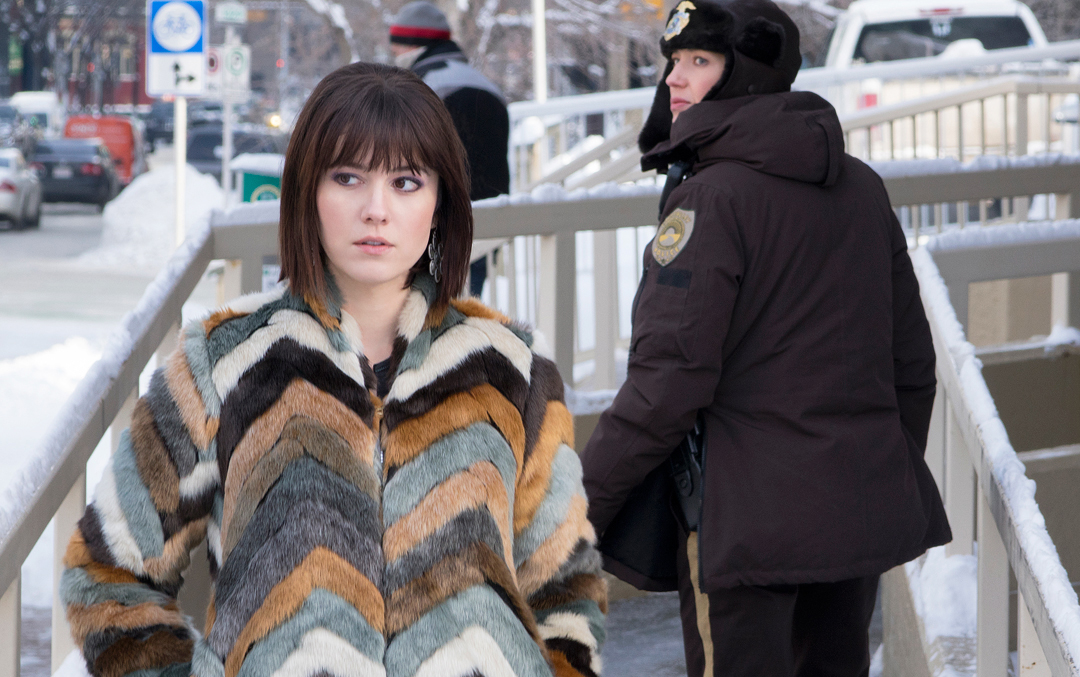 If there was one overriding feeling I got from Fargo’s third season, it was that everything was a touch too uniform. The context and relationships between characters were too clean: Varga ‘came on the south wind’ etc. at the start, and would remain a deadly thorn in Emmit’s side until the end of the show. Ray and Nikki’s relationship became established as genuine soon after the start, and after his death, she became dedicated to avenging him. Gloria was, from start to nearly the finish, lamenting a disinterested boss.
If there was one overriding feeling I got from Fargo’s third season, it was that everything was a touch too uniform. The context and relationships between characters were too clean: Varga ‘came on the south wind’ etc. at the start, and would remain a deadly thorn in Emmit’s side until the end of the show. Ray and Nikki’s relationship became established as genuine soon after the start, and after his death, she became dedicated to avenging him. Gloria was, from start to nearly the finish, lamenting a disinterested boss.
It didn’t feel like there was quite as much upheaval as in previous seasons; think of the chaotic journey, for example, of Martin Freeman’s Lester Nygaard in season 1, who inadvertedly inspires the murder of Sam Hess, accidentally kills his own wife, drives Malvo to murder three people in a Las Vegas lift, and ultimately dies by falling through thin ice on a lake. Nikki’s development comes closest to this drama, but it felt like the plot was generally following more binary lines than previously.
Does that make Fargo bad? No, and as mentioned above, it’s hard to see a time when it could be bad. Season 3 of Fargo wasn’t the best season of the show, but it still had superb characters, and Noah Hawley’s trademark experimentality to prop it up. Besides, a lesser season of a great show, is still pretty good.
★★★★
SaveSave
SaveSave
SaveSave
SaveSave

